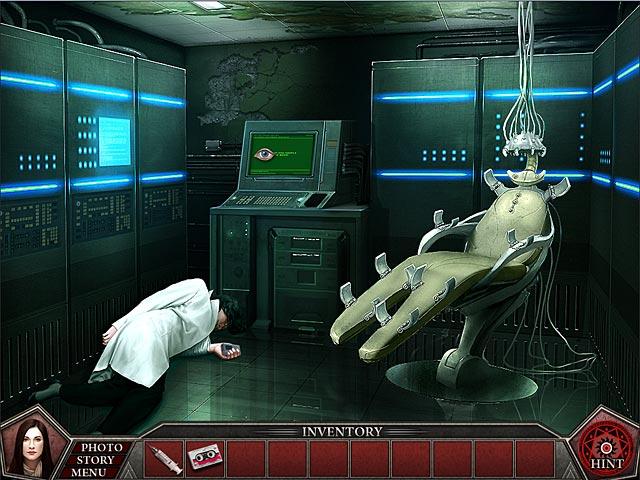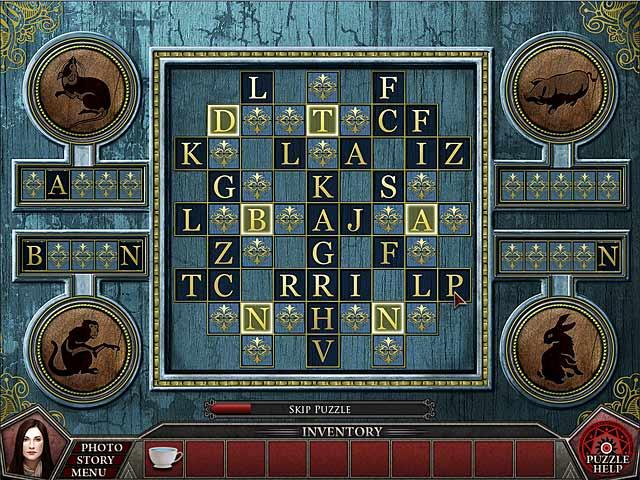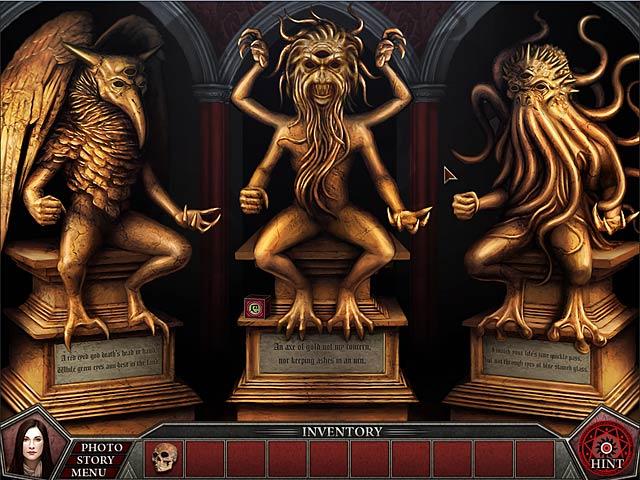- Wondering how to get Monopoly GO! free rolls? Well, you’ve come to the right place. In this guide, we provide you with a bunch of tips and tricks to get some free rolls for the hit new mobile game. We’ll …
Best Roblox Horror Games to Play Right Now – Updated Weekly
By Adele Wilson
Our Best Roblox Horror Games guide features the scariest and most creative experiences to play right now on the platform!The BEST Roblox Games of The Week – Games You Need To Play!
By Sho Roberts
Our feature shares our pick for the Best Roblox Games of the week! With our feature, we guarantee you'll find something new to play!Type Soul Clan Rarity Guide – All Legendary And Common Clans Listed!
By Nathan Ball
Wondering what your odds of rolling a particular Clan are? Wonder no more, with my handy Type Soul Clan Rarity guide.
Nightmare Adventures: The Turning Thorn Review
When you’ve played as many adventure games as I have, you just about do a dance of joy when a developer makes one that’s not about ghosts or fairies or Victorian Times. You also want to do a little jig when they employ logic in their design and don’t rely on unlikely contrivances. In making Nightmare Adventures: The Turning Thorn, Ghost Ship Studios has given people like us cause to happy-dance the night away by giving us a tightly-constructed adventure game that’s fresh in setting, story and execution.

Continue Kiera Vale’s search for answers regarding her ancestry as you work to uncover a secret government plot.
When you’ve played as many adventure games as I have, you just about do a dance of joy when a developer makes one that’s not about ghosts or fairies or Victorian Times. You also want to do a little jig when they employ logic in their design and don’t rely on unlikely contrivances. In making Nightmare Adventures: The Turning Thorn, Ghost Ship Studios has given people like us cause to happy-dance the night away by giving us a tightly-constructed adventure game that’s fresh in setting, story and execution.
The Turning Thorn continues a story begun in Nightmare Adventures: The Witch’s Prison. Once again we become professor of arcane archeology, Kiera Vale and take on the shady doings of A.R.C.A.N.E., an occult government agency. In the first game, Kiera discovered her connection to A.R.C.A.N.E through a familial link to Blackwater Asylum; here she’s lured into cooperating with the group to help a sick young girl. I have to say, Kiera Vale’s one of my favorite heroines in recent memory. She’s smart, independent, accomplished—she’s a believable adversary for the powers of the dark side. Even better, she’s got a wry sense of humor that shows itself often in the comments she makes throughout the game.
Adventure games often contain situations that in normal life we’d be taken aback by, but which its characters seem to accept as a matter of course. For instance, most of us might think it odd to open a dumpster behind a government bunker and find it full of broccoli. Your average game character wouldn’t even remark on it, and instead would just grab whatever useful item’s sitting atop the unlikely pile. Kiera’s reaction makes much more sense: “OK, that’s weird.” It’s a small thing, her recognizing the game world’s oddities; perhaps some players won’t even notice it. For me however, these intelligent, amusing commentaries do a lot to immerse me in The Turning Thorn‘s world.
Ghost Ship Studios does just as well with interactivity as with commentary by giving each scene several areas for commentary and manipulation. This attention to sometimes inessential detail is undoubtedly more work for them, but expands the game world and makes it feel more alive. When I mention interactivity in relation to The Turning Thorn, I mean exploration and puzzle solving. This is not a hidden object game, except in a genius section wherein it actually pokes fun at the genre. I personally love that part of the game, because it draws attention to the sillier (and lazier) aspects of hidden object game design. Aside from this small satirical section, the game employs no hidden object scenes and relies (very successfully, I might add) on its collection of unique and interesting puzzles.
There are more atypical puzzles in this game than any I’ve played in a while. Before this, I was beginning to think there were a set number of puzzles in the world, and that game designers were only allowed to choose among them. The Turning Thorn comes up with some great little brain teasers (a couple are pretty darn challenging – one involving multiple security cameras had me scratching my head for a while). It also does us the favor of creating a convenient way to reference puzzle clues. Whenever you find something—a note, a drawing, a photograph—that’s used to solve a puzzle later on, Kiera takes a picture of it. When you encounter a puzzle and click the onscreen photo button, the game instantly displays the clue that relates to solving that particular puzzle. It’s great, because it saves you from sifting through a journal’s worth of clues, trying to determine which one applies.
Other great things about The Turning Thorn include some nice voice acting and graphics, a cool psychic/dream logic sequence, a streamlined approach to character dialog exchanges, a believable story climax, and a skillful lead-in to what will probably be a third Nightmare Adventures game. Many an adventure game spends hours building up to a confrontation with the villain, only to kill the excitement by having you stop in the middle of it to do more stuff. Imagine, you find the ultimate weapon and you finally catch up to the evil so-and-so who wants to destroy the world. Instead of finishing him off, you say, “Excuse me, would you mind terribly if we stop for ten minutes while I search through rooms I’ve already been to and dig through piles of random junk?” The Turning Thorn avoids all this and handles the story’s climax with great finesse. Better yet, it creates an epilogue that doesn’t leave you feeling cheated.
If I had to criticize The Turning Thorn for anything (and being a critic, that’s my job), I’d have to mention that I wish once you were done with an interactive close-up, it stopped being accessible. I’m one of those people who will obsessively click on an area as long as it’s interactive, for fear I missed something. Finished close-ups remain interactive and for clarity’s sake, they shouldn’t. Another bothersome thing for me is that minimizing the game generally makes it stop working. Most of us are doing multiple things on our computers at once, and since I’m often playing a game while monitoring my email, I like being able to minimize games without penalty. Minimizing The Turning Thorn makes all its assets reload and more often than not freezes the game, forcing you to shut down and restart.
Still, these few complaints are insignificant compared to everything I love about the game. In fact, to me it’s so good, I don’t even care that it’s not a Collector’s Edition. CE’s have become the thing to do these days, but rarely do they justify being double the price. Too often the “extras” consist of the main game’s ending chopped off and turned into a so-called “bonus” chapter, thrown in with a bunch of wallpapers that are really just screenshots anyone could take. This game doesn’t need that kind of padding.
Nightmare Adventures: The Turning Thorn is an amazing game, plain and simple. By embracing intelligent design, comprehensive interactivity and clever storytelling, it does what so many other adventure games wish they could do, and without all the extraneous bells and whistles.

The good

The bad
More articles...
Monopoly GO! Free Rolls – Links For Free Dice
By Glen Fox
Wondering how to get Monopoly GO! free rolls? Well, you’ve come to the right place. In this guide, we provide you with a bunch of tips and tricks to get some free rolls for the hit new mobile game. We’ll …Best Roblox Horror Games to Play Right Now – Updated Weekly
By Adele Wilson
Our Best Roblox Horror Games guide features the scariest and most creative experiences to play right now on the platform!The BEST Roblox Games of The Week – Games You Need To Play!
By Sho Roberts
Our feature shares our pick for the Best Roblox Games of the week! With our feature, we guarantee you'll find something new to play!Type Soul Clan Rarity Guide – All Legendary And Common Clans Listed!
By Nathan Ball
Wondering what your odds of rolling a particular Clan are? Wonder no more, with my handy Type Soul Clan Rarity guide.








 “
“ “
“